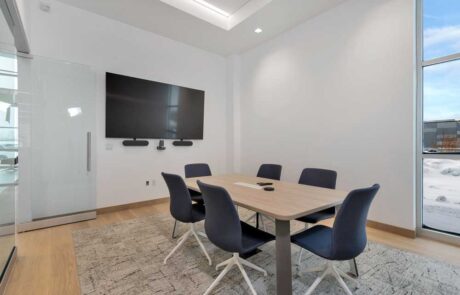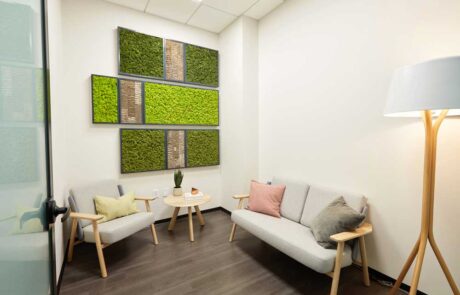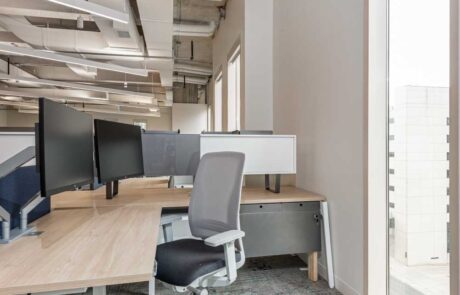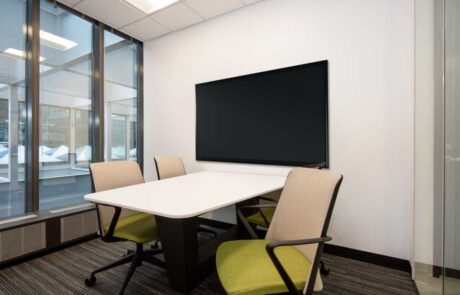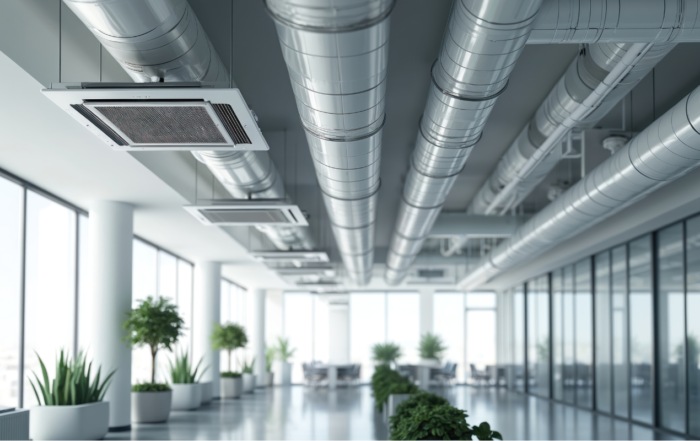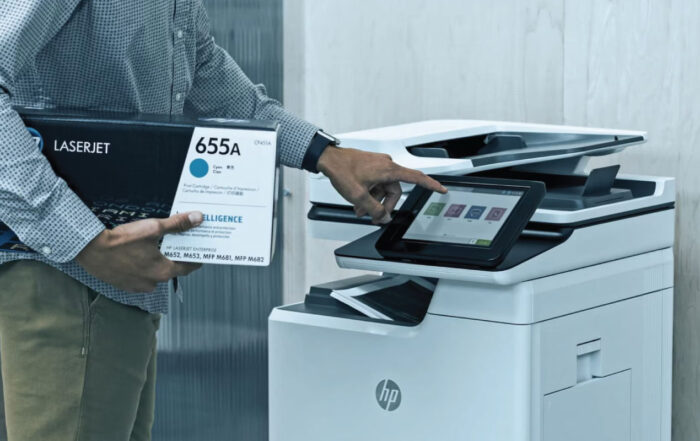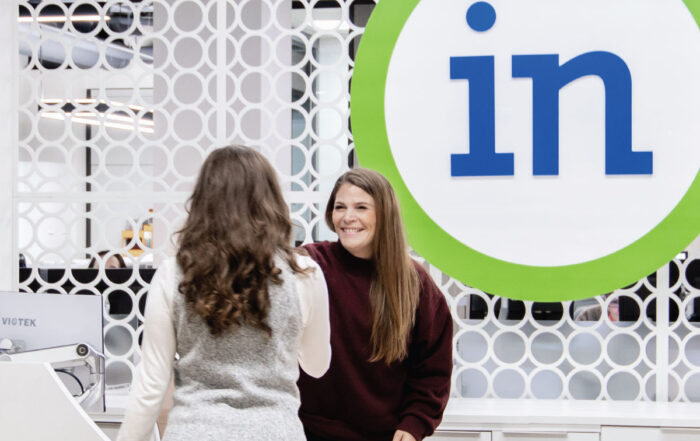
Your workplace wherever that is today and into the future: home, office, hybrid
Many of us have been working from home since March of 2020. We have all experienced change this year, more change than ever before. We have been challenged with, “you are muted”, my microphone is not working, and even the moments you were not muted and wished you were…we were thrown into remote work without warning. Nearly a year later, we have started to figure things out and a lot of research has been done.
In the new normal, “over 70% of people want [continued] flexibility to work from home”, while many agree that the office is still necessary (CoreNet Global News, David Harrison). This year, “a new [hybrid] workforce will emerge with 20-30% of people working remotely 2-3 days a week” (CoreNet Global, guest post by H. Hendy & Associates).
How will you manage the new hybrid workforce and is your office set up for success?
We have conducted our own survey to understand employees’ feelings about working from home, what they miss about the office, and where they foresee working in the future. We took a research-based approach and aim to guide you and your business to successful hybrid solutions. Respondents range from Gen Z to Baby boomers who work at small to large companies.
Impromptu conversation and spontaneous knowledge sharing that happens in the workplace is currently absent but at the same time “the idea that everything needs to be in person has clearly been disproven” (Business Insider).
Respondents
Respondents
OUR FINDINGS
How comfortable do you feel returning to the office in the next 1-2 months?
Right now, 62% of respondents feel uncomfortable returning to the office in the next month, with large companies (501-1000+) and Millennials being more hesitant with over 70% uncomfortable. Meanwhile, those who are comfortable returning to the office are still concerned about being exposed to COVID-19 and 29% of the group does not want to return to the office. Their top fear after potential exposure to COIVD-19 is decreased flexibility to work from home even though they feel less productive at home and more report that they do not have the tools/tech/equip they need compared to the majority. Employees at small companies want to return to the office more than employees at medium and large companies. Those who are uncomfortable returning to the office in the next month do not want to spend a lot of time in the office and feel more productive and set up to work from home compared to the majority.
Do you feel that your office space is set up to ensure your safety?
Most employees feel their workplaces are set up for their safety, yet they still do not want to return to the office. Employees of large companies are 13% less confident than the average in the safety of their workplaces.
Those who feel their office is not set up for their safety are much more uncomfortable returning and if they were to go to the office it would be for less than 3 hours.
Which of the following are concerns you have about returning to the office?
The top concern across the board for every size company and age group was exposure to COVID-19, #2 concern is decreased flexibility to work from home. #3 potentially spreading COVID-19. Employees ages 30-55 have organizing childcare as a top 5 concern.
Insights and Recommendations
Safety, cleanliness, and touchless features are here to stay. Employees crave flexibility and choice of where to work to maintain their work-life balance, decrease commute time, and eliminate office distractions. Many employees with children have been challenged with distance learning this year and there may be an increased appetite for childcare near or in the office in the future.
OUR FINDINGS
Do you want to return to the office, yes or no?
A little less than half of all respondents do want to return to the workplace while large companies and people age 40-55 want to return the least. Age 25-29 really want to return to the office (85%!! Compared to the average 49%)
Those who do not want to return to the office are much more set up at home and have tools/tech/equip compared to the majority and nearly 100% feel productive at home! They enjoy working from home, feel productive doing so and prefer to work from home. At the same time this group reported that they have the highest need for appreciation/recognition.
Respondents who do want to return to the office would feel comfortable in the office for longer durations, 39% increase compared to majority. These folks feel a lot less productive at home than the majority, 15% decrease. They also report not having the tools/tech/equip needed at home. Lastly, these people feel much less connected to colleagues and company culture than the majority.
What is the maximum amount of time you would feel comfortable being in the office in a day?
57% of respondents (37% = 8+ hours) feel comfortable staying in the office 4 or more hours while younger employees (25-29) are 10% more comfortable for a longer duration than other age groups.
If any, what tools, technology, and equipment are you missing at home?
The top missing items in the home office are:
-
- Printer/scanner
- Extra monitors
- Adjustable height desk
- Task chair
- Wrist rests
I feel I am as productive or more productive working at home compared to in the office:
82% of respondent’s self-report that they feel productive at home.
The physical setting I use to perform my work at home is suitable for the work that I do?
87% of employees feel their at home workspace is suitable for the work they do while only 64% age 18-29.
Compared to working in the office, do you feel you have the tools, technology, and equipment you need while working from home?
77% of employees feel they have technology, tools, and equipment needed while working from home.
Insights and Recommendations
People have different feelings about the pandemic, some are more comfortable than others. Many people are productive at home and some are not. Most people report that they have the technology, tools, and equipment they need at home and feel their work setting is suitable, but some items are still missing at home. Those who feel set up at home report that they are more productive. The biggest takeaway is that you need to ask your employees how they are feeling and work on a plan that is effective for both the business and the individual. Furthermore, many companies are offering support relating to the home office. Fifty-nine percent of survey respondents plan to provide assistance, or increase assistance, to employees with expenses related to equipping a home office (e.g., furniture, internet service, cameras, microphones, etc.) as a result of the COVID-19 crisis (CoreNet Global News, David Harrison).
The biggest takeaway is that you need to ask your employees how they are feeling and work on a plan that is effective for both the business and the individual.
OUR FINDINGS
Which days do you foresee being in the office?
Overall, employees foresee being in the office randomly based on their schedule the most, more than any day. Mondays and Fridays are the least popular days to be in the office, while Tuesdays and Thursdays are the most popular.
What activities/tasks would you return to the office to do?
Scheduled meetings are the #1 reason for employees to return to the office followed by connection to colleagues, and to use the printer or other equipment.
The only group to return to the office to do focus work when they cannot at home is age 18-29.
Many younger employees do not have dedicated workspaces (36% do not), and do not have the technology, tools, and equipment needed to perform their job at home (nearly half, 43% do not) with that they do not feel productive at home (36% do not feel productive at home).
Insights and Recommendations
Most respondents foresee being in the office randomly based on their schedule. This will pose coordination challenges for teams and managers and for cross-generation mentorship/learning in the office. How will we support the much-needed spontaneous learning and collaboration that occurs in the office? Consider ways to encourage employees of all ages to be present in the office at the same time by offering free lunch, bring in guest speakers, and schedule in-person team meetings in the office occasionally. Make your workplace an “experience”. Design creative zones, private huddle spaces for productivity and communal gathering space that bring life and energy to enhance the culture of your organization!
People WILL still work from home while others work in the office, you must ensure your workplace is set up to support this hybrid workforce. It should be a human-centric experience that starts at home and extends to the office. This experience needs to blend the physical and virtual, ensures connections with colleagues and company culture, provides space for inspiration, mentoring, creativity, and innovation.
The first step to get there is to assess your in-office technology: make sure it is up to date and that most rooms include integrated technology with cameras, speakers, and microphones. In the event you need to equip a room, choose systems that are easy to use, plug and play with the ability to seamlessly connect to mobile devices. Next look at your workplace layout and furniture. Is it flexible, can it easily be reconfigured?
Make your workplace an “experience”. Design creative zones, private huddle spaces for productivity and communal gathering space that bring life, energy and enhance the culture of your organization!
Your space should be able to evolve with current events. Consider systems that you can easily reconfigure, adjust the height, and change the material. Use demountable walls that you can move to ebb and flow with space guidelines and social distancing. Lastly, consider workplace branding and wellness. Provide spaces for respite such as a wellness room with comfortable seating and dimmable lighting. Incorporate plants and greenery (biophilia) and natural lighting as much as possible. Design spaces to inspire your employees, check out the immersive space series Google is rolling out! (Fast Company, Nate Berg). Consider all human senses when designing the evolving workplace: smell, touch, sight, sound, and taste. You must strive for workplace synergy, when people and process are supported by place and technology, your business is successful.
OUR FINDINGS
People feel significantly less connected to their colleagues and their company cultures working from home while employees of large companies and age 18-29 feel the least connected.
Insights and Recommendations
So how will we solve this problem of disconnect? We need to bring people back together in the office by creating purposeful destinations and sensory experiences that people cannot get at home. Consider creating high-tech experiences in the office maybe even virtual reality for people to visit any place in the world to be inspired or to take a break. Offer them a place to go for collaboration and connection with other humans within the office. The number one thing employees need from their managers right now is appreciation/recognition. Can we discover ways to provide employees with this in the office? Consider a feature wall with employee recognition or branded swag items that are handed out in the office.
Here is what a couple of respondents said,
“I like working in the office because I have a more comfortable workstation than my setup at home.”
“Once there is a vaccine and it is safe for more people to be in the office more regularly, I could see myself working a couple days a week at the office in order to have in person work experiences with coworkers.”
Start with your employees, understand their needs and work functions so you can provide a space where they can be most successful, in turn, making your business more successful.
As you have seen from our survey results, companies and people are different and there is not a one size fits all workplace for everyone. New builds, renovations, and reconfigurations should start with your employees. Understand their needs and work functions so you can provide a space where they can be most successful, in turn, making your business more successful.
Through this experience of working from home people have found ways to balance work and life and many have upped their wellness and wellbeing. The workplace of the future will support employees wellness more than ever before. “This is our next normal where the office is now one piece of an ecosystem of places that all ensure safety, create desirable work environments, and promote the why in “why our people get together” (CoreNet Global News, Tim Venable). What will bring people back to the office? A more comfortable workstation than their home set up, intentional in-person scheduled meetings, fun events where they can connect with colleagues, immersive spaces where they feel inspired, if done right, a purposeful destination, your office.
Innovative Office Solutions is here to help guide you in this journey! Get started today!

